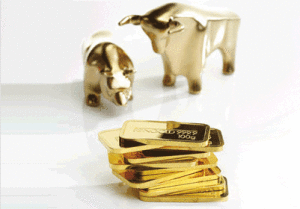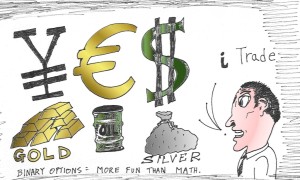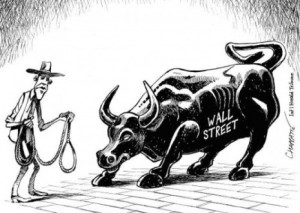October 20, 2015
 Sugar is not a grain, or a meat commodity – it is regarded as a soft commodity in much the same way as lumber, cocoa, coffee, orange juice and cotton are. Sugar is primarily traded on the ICE exchange (Intercontinental Exchange) and it has the following ticker symbol: SB. However, sugar is also traded on other exchanges around the world, including the Zhengzou Commodity Exchange (CZCE), the National Commodity Exchange Limited (NCEL), the Brazilian Mercantile and Futures Exchange (BF&M), the National Commodities and Derivatives Exchange (NCDEX), and the Kansai Commodities Exchange (KEX).
Sugar is not a grain, or a meat commodity – it is regarded as a soft commodity in much the same way as lumber, cocoa, coffee, orange juice and cotton are. Sugar is primarily traded on the ICE exchange (Intercontinental Exchange) and it has the following ticker symbol: SB. However, sugar is also traded on other exchanges around the world, including the Zhengzou Commodity Exchange (CZCE), the National Commodity Exchange Limited (NCEL), the Brazilian Mercantile and Futures Exchange (BF&M), the National Commodities and Derivatives Exchange (NCDEX), and the Kansai Commodities Exchange (KEX).
Each contract size for sugar is 50 long tonnes or 112,000 pounds. Sugar is delivered in raw sugar cane with 96° of polarization. Sugar contracts are traded in the following months: January, March, May, July and October from Monday through Friday 2:30 am through 3:15 pm Eastern Standard Time. The price of sugar is quoted at $0.0001 cents per pound, and the tick size is 0.01. Traders must meet specific margin requirements to trade sugar as this determines how much outlay is needed for each contract size.
For example a hypothetical sugar futures contract could take the following format: SB15F@13.12 means that the Sugar Contract for 2015 January is trading at $0.1312 per pound. This is precisely the type of format that a sugar trader would purchase a contract. When you are ready to trade sugar contracts on the ICE, the margin requirement is 12%. In the preceding example, the contract size of 112,000 pounds of sugar would cost a trader $14,672. With a 12% margin upfront, the amount needed to make the trade is $1,760.64.
Understanding How Profits are generated with Sugar
For every $0.0001 move in the price of sugar, the total price move for the contract is $11.20. Profits in sugar contracts are easily determined by the difference between the exit price and the contract price. The result is then simply multiplied by $11.20. Presently, the price of sugar is $11.57. The price of sugar is near its 5 year low figure, since it was trading close to $35 in 2011. The price of sugar has consistently declined over the past five years. Prior to the 2011 sugar price surge, trading sugar was well beneath $30, and in fact between late 2006 and 2008 was hovering around the $10 range.
Sugar is primarily available in the form of honey, Maple syrup, sugar beet and sugar cane. Its distinctive characteristic is that it is sweet and this carbohydrate is an instant pick me up by being able to generate rapid energy for the user. The refined form of sugar is white sugar and it comes from sugar beets and sugar cane. Some 78% of global production in sugar comes from sugar cane. This is why it is imperative to follow news updates regarding weather phenomena that impact upon sugarcane production. Shortages of sugar cane lead to price rises in sugar, depending of course on demand and sugar inventories.
The world’s major producers of sugar include Brazil and India, followed by the European Union. What is particularly interesting about this particular commodity is that the majority of sugar is consumed in the country of its production. This is in stark contrast to many other agricultural commodities such as wheat, corn, soy beans, red meat etc. Many countries export the vast majority of their agricultural produce and soft commodities.
Determinants of the Sugar Price
Depending on which country or region we were talking about, demand for sugar will vary considerably. Western societies are moving away from sugar-saturated diets, in favour of sugar substituted diets. This trend is likely to continue as concerns grow about the impact of consuming too much sugar on the general health and well-being of society.
Sugar substitutes are now widely used across the US and Canada, with Europe close in tow. Some of the most pressing concerns with regards to sugar consumption are obesity, diabetes, tooth decay and the like. Even with declining preferences for sugar, the US remains a major consumer of world sugar.
The price of sugar is not free of market manipulation. In the US and many other countries, there are measures in place to protect producers by maintaining artificially high prices. This has the effect of causing consumers to look at alternatives. For example, many food companies are now turning to corn syrup as a substitute sugar. There are growing calls from sugar beet producers and sugar cane producers for a free-market system vis-a-vis sugar prices.
Of course an important determinant of the price of sugar is the quantity of sugar beets and sugar cane. As mentioned, the more abundant these commodities are, the lower the sugar price will be, all things being equal. Adverse weather has a detrimental effect on the production of these crops. Things like frost damage, excessive rains and flooding, droughts and other negative weather phenomena reduce the crop supply and raise the price of sugar on the markets.
It is clear that tariffs and subsidies are widely used to prop up the sugar markets around the world. Nobody knows quite what the real price of sugar should be, since there is so much artificial maintenance of market prices. In truth, the price of sugar may well be substantially less than what it presently is, but the clearest indicators yet of the price of sugar are likely found in things like export numbers, domestic consumption and society’s changing attitudes towards processed sugar.
Tags:
Business,
Capital,
Commodities,
investments,
money,
stock,
Sugar,
Trading
October 28, 2014
 Personal investments can take many forms. Depending on the income of the investor, his appetite for risk, the expenses that he is responsible for and the rate of return that he expects, his investment portfolio will contain different instruments of financial saving. In general some common investment opportunities include real estate, shares and bonds, gold in physical form or tradable bonds, and mutual funds with a systematic investment plan or SIP. Of late people have begun venturing in to the field of commodity trading as a retail investment as well.
Personal investments can take many forms. Depending on the income of the investor, his appetite for risk, the expenses that he is responsible for and the rate of return that he expects, his investment portfolio will contain different instruments of financial saving. In general some common investment opportunities include real estate, shares and bonds, gold in physical form or tradable bonds, and mutual funds with a systematic investment plan or SIP. Of late people have begun venturing in to the field of commodity trading as a retail investment as well.
What does Commodity Trading involve?
Commodities in the field of Commodity Trading refer to food, energy or metal products which are an important aspect of industrial production. These key commodities are important for development and thus people invest in them using different options. The first is a Futures Contract wherein an investor agrees to buy or sell a specific commodity at a given price in the future at an agreed date. Futures contracts can be drawn up for commodities such as crude oil, natural gas, gold, silver, and even agricultural produce such as wheat, corn and rice.
The trouble with a Futures Contract is that it is very high risk and also rather expensive for a single retail investor. This is where commodity trading companies can help. As a retail investor you open up an account with a commodity pool operator and this person or partnership invests the money collected from individual investors in futures contracts and options. They keep you updated with account statements and annual reports. You ride out the contract with the partnership and split the profits or losses as generated.
Other Instruments to Invest in Commodities
While some investors are happy allowing an expert to handle their daily buying and selling, others wish for a more hands on approach. In this case stock options are a good investment plan. Commodity stocks are easier to buy than futures contracts. They also employ the broker pattern, so if you are already using a broker for company stocks, you will find it easier to add on a broker for commodity stocks. You can also hold on to them or sell them at will based on what changes you see in the market as you track them. Needless to say this option offers you greater control over your investment.
If monitoring commodity stocks on a daily basis is an activity that you would rather not do, you can consider investing in Commodity Exchange Traded Funds. These track the price of a single commodity and use an index of futures contracts. So while you are not directly investing in a futures contract you can still get the benefits associated with investing in one. Not all commodities have Exchange Traded Funds associated with them, so your investment options in commodities via this instrument will be somewhat limited.
You can also invest in mutual funds as an indirect means of commodity trading by investing in a mutual fund that invests in the stocks of companies that are involved in commodity trading. This will allow you to be recipient of the trickledown effect in the profits generated and will also guard you against sharp losses. All in all commodity trading is an investment worth considering in your portfolio.
Tags:
Cash Flow,
Currency Converter,
economy,
Foreign Exchange,
Investmentrs,
money,
Trading
July 29, 2014
 When we talk about performance and trust in the binary options industry, EZ Trader is one of the brokers who has won many traders over the years from all over the world.
When we talk about performance and trust in the binary options industry, EZ Trader is one of the brokers who has won many traders over the years from all over the world.
Being one of the first binary options platform (they have their own trading platform which saves you time by avoiding the intermediary companies and offers unique trading systems), since 2008, EZ Trader holds the WGM (Win Global Markets), Services Ltd. of the year 2011, with the headquarters at Nicosia (Cyprus).
Amongst the advantages the company offers I can mention the fact that you don’t have to download any software on your computer, the EZ Trader platform is fully web-based, easy to use (alongside with the HELP and FAQ domains) and very user friendly.
If you activate an account at their platform you will benefit from free online consulting (it is very important that you can communicate with them with ease and they offer that in more than one language), you can contact them with ease through e-mail or by calling the international numbers available at their platform (7 in total at this moment).
Traders can benefit from mobile apps too, the user can use this app on iOS or Android, the app is called EZ Mobile. All you have to do is work with passion, inform yourself, always pay attention and you will succeed and multiply your income using one of the best platforms.
In this EZ Trader review you will also see the assets they offer and these are as follow: 58 stocks, 10 currencies, 19 indices and 4 commodities, overall you can benefit from 91 assets (at the beginning they had 44 assets but since 2011 they have almost double that number); these assets are composed from: indices, stocks, commodities and Forex.
Besides the doubling of the asset number available at EZ Trader they have improved the Lock-Out Period, Expiry Times and they offer more flexibility to your options, making your trades much easier to realise.
In this domain you must be very well informed and EZ Trader will help you find with ease every bit of news you might need to make the best trades for you.
Before every transaction you must read a lot, you must understand the process completely, you must know the terms, you must always create a strategy and then try your luck.
EZ Trader is ideal not only for traders that have already gathered a stock of knowledge about binary options, offering them safety and simplicity but also for the beginners, offering them information and substantial bonuses.
Even if at the first sight this platform used to give the binary options business more of a gamble look they have evolved a lot along the years and now they are a trustworthy binary options broker (being controlled by the CySec: Cyprus Securities and Exchange Commission can only confirm that they are serious).
You can read a full EZ Trader Review and find that there are bonuses which are offered to the traders without commissions draws in more every day and they are helped through free online consulting (24 hours a day, 7 days a week) and through the loyalty bonuses.
Some traders consider that true binary options brokers should offer good software and analysis tools and as much information about the assets as possible. The same traders consider that EZ Trader is focused too much on huge bonuses and low charging fees and for this reason the company may resemble a gambling casino.
The bonuses offered by EZ Trader are: for a minimum deposit of 500 you get a bonus of 250 and the wager is 25 times the received bonus (and the period of time in which you must obtain this volume are 90 days).
Considering the different assets and time frames they offer up to 95% return, all you have to do is pay attention and profit from their offers. Withdrawal time usually ranges somewhere between 5 and 7 days, you must be patient until you get your first winnings.
As you use EZ Trader’s platform you will learn more about binary options, invest wisely and enjoy the online experience offered by every transaction.
Tags:
Binary Options,
Business,
Currency,
economy,
Foreign Exchange,
Forex,
income,
money,
Stock Exchange,
Trading
July 28, 2014
 If you’re a movie buff and coincidentally enjoy watching the markets as well, it’s likely you’ve seen the movie Wall Street. The villain, Gordon Gekko, is a fictional stock broker who, while being exceptionally greedy, had a knack for managing investments. Albeit fictional, he became a huge symbol for all the negative aspects of a stock broker.
If you’re a movie buff and coincidentally enjoy watching the markets as well, it’s likely you’ve seen the movie Wall Street. The villain, Gordon Gekko, is a fictional stock broker who, while being exceptionally greedy, had a knack for managing investments. Albeit fictional, he became a huge symbol for all the negative aspects of a stock broker.
Australian Prime Minister, Kevin Rudd, even labeled the perpetrators of the 2008 financial crisis as “Children of Gordon Gekko”. The character is said to be loosely based on a collection of stock broker personalities including Michael Robert Milken who was indicted for racketeering and securities fraud back in the late 80s.
Obviously, this is not how the majority of stock brokers behave, so don’t let this movie skew your perception of the career. Rather, learn the true nature of the profession and gain insights from some of the most successful brokers and hedge fund managers who intend on building positive legacies for themselves. Here are four notable individuals who fit that description:
Chris Gardner
Well known for the movie “The Pursuit of Happyness”, Chris Gardner worked hard at Dean Witter Reynolds as an unpaid intern while homeless and caring for his only son in 1981. They would sleep in bathrooms and church shelters and he would be the first one in and last one out of the office aggressively calling potential clients. He eventually was able to pass the licensing exam necessary to becoming a stock broker. He later left Dean Witter Reynolds to work for Bear Stearns and became one of the top earners of the company. He now owns his own company Gardner Rich & Co LLC and has a net worth of about $60 million.
Ray Dalio
Born in Queens, New York, when he was 12 he bought $300 worth of shares in Northeast Airlines and ended up tripling his investment after the company merged. He earned his BA from Long Island University and his MBA from Harvard. Ray began his career in finance investing in commodity futures on the New York Stock Exchange. He also worked as a futures trader and a broker at Shearson Hayden Stone. He now has a net worth of about $12.5 billion and runs the largest hedge fund firm, Bridgewater Associates. You can find an informative animated video titled “How The Economic Machine Works” on YouTube where he shares his extensive experience of the investment world.
David Tepper
He has been listed by Forbes Magazine as one of the 25 Highest-Earning hedge fund managers in 2013 and earned a whopping 61% return focusing on distressed bonds in 2001. He began his career in finance in the treasury department of Republic Steel in Ohio and later became a credit analyst at Goldman Sachs. The hedge fund firm he leads is Appaloosa Management and has earn substantial returns over the course of its history. In 2012, the firm earned a 30% return because of pinpoint exchanges on certain securities. He has a net worth of about $7 billion and engages in various philanthropic activities mainly in education and hunger. In 2003, he made a considerable $55,000,000 donation to Carnegie Mellon University’s business school. He’s leaving quite a legacy.
Bruce Kovner
This hedge fund manager has been around the block a few times, literally. He became a taxi cab driver at age 31 after quitting his Harvard PhD studies because of writers block. It was then when he decided to engage in derivatives by investing $3,000 from his MasterCard into soybean futures contracts. He didn’t accurately assess the risk of the investment when it grew to $45,000 because he waited till the price dropped to $23,000 before selling. He cites that experience as an important lesson in risk management. He eventually became a trader at Commodities Corporation which is now connected to Goldman Sachs. Currently he’s the chairman of Juilliard where he learned how to play the harpsichord. His net worth is $4.3 billion.
If interested in learning more about a career as a stock broker, visit http://www.stockbrokersalary.biz to read up on informative articles related to the profession. Also, find out how to market yourself as a stock broker to increase your client base.
Tags:
Broker,
economy,
financial planning,
Foreign Exchange,
Funds,
money,
stock,
Trading
November 23, 2013
If you are new to the word of Forex trading, then read on here. First of all, forex trading is a shorthand way of saying foreign currency exchange trading. In the introductory video to forex trading, which you can watch below, you will receive a simple overview of this form of investing. As you will see, a lot of investors do not participate in this form of trading, but maybe they should.
Where’s the Money in Trading Currency?
Maybe the extent of your knowledge about currency stops at the currency exchange, as in “How many shoes can I buy in Britain if the US dollar is trading at 1.52 for every British Pound?” Currency trading is the art of making money on the spread of going between currencies.
Basically, currency is factored out to the fourth decimal place. That is where most of the gains and losses will appear. In that fourth decimal space is the one-one-hundredth of a percent, also called pips. Now you know what a pip is.
As with any securities and commodities trading, currency trading has no guarantees. It is all about learning a new way of investing while making sure you can afford to lose the money you put out for trading purposes. There is an interesting term used to describe gains or losses that is unique to forex trading.
Starting Small in Forex Trading
Plenty of big fish are in forex trading, which mostly consists of larger banks. As an individual investor it may feel both exciting and intimidating to start out as an investor. Did you know that large banks aid businesses who need to make exchanges of goods across international borders in their conversion of value from one currency to another?
Anyhow, the reason for mentioning this is that even the professional traders have a tough job. They do not all make money all the time. This is one piece of information to keep you going, especially as you are just starting out here. Instead, take time to learn the nuances of technical analysis. Learn to read charts, what they may indicate and how that might impact your present investment strategy.
From there, be sure to master the trading platforms and systems that are available to you as an individual forex investor, because it maximizes these tools. Learn to read graphs and determine pips to chart progress, click here to learn more about moving averages and reading graphs.
Tags:
Currency,
economy,
Foreign Exchange,
Forex,
money,
Trading
 Sugar is not a grain, or a meat commodity – it is regarded as a soft commodity in much the same way as lumber, cocoa, coffee, orange juice and cotton are. Sugar is primarily traded on the ICE exchange (Intercontinental Exchange) and it has the following ticker symbol: SB. However, sugar is also traded on other exchanges around the world, including the Zhengzou Commodity Exchange (CZCE), the National Commodity Exchange Limited (NCEL), the Brazilian Mercantile and Futures Exchange (BF&M), the National Commodities and Derivatives Exchange (NCDEX), and the Kansai Commodities Exchange (KEX).
Sugar is not a grain, or a meat commodity – it is regarded as a soft commodity in much the same way as lumber, cocoa, coffee, orange juice and cotton are. Sugar is primarily traded on the ICE exchange (Intercontinental Exchange) and it has the following ticker symbol: SB. However, sugar is also traded on other exchanges around the world, including the Zhengzou Commodity Exchange (CZCE), the National Commodity Exchange Limited (NCEL), the Brazilian Mercantile and Futures Exchange (BF&M), the National Commodities and Derivatives Exchange (NCDEX), and the Kansai Commodities Exchange (KEX).



Recent Comments